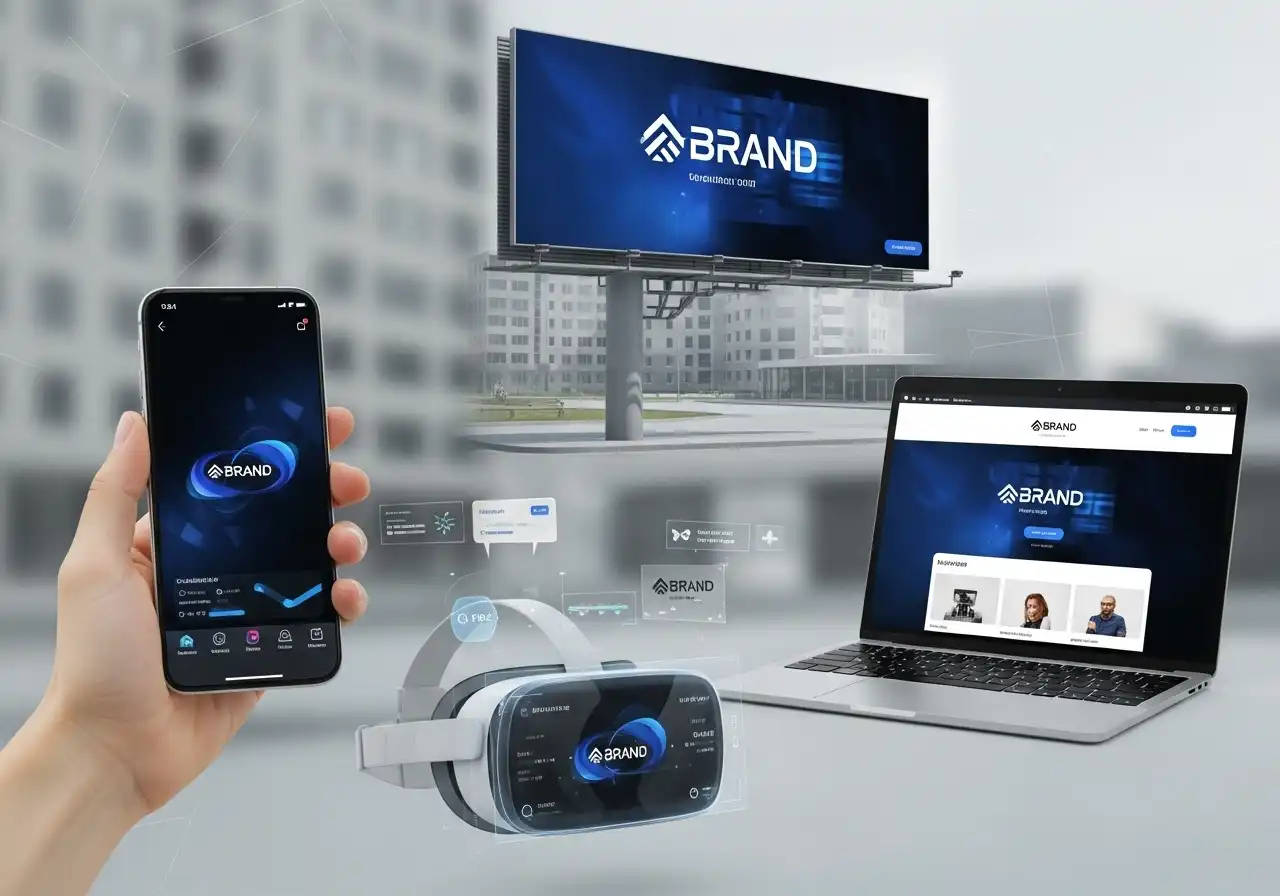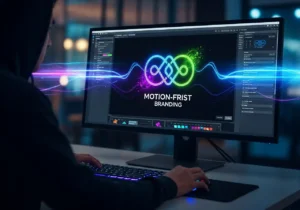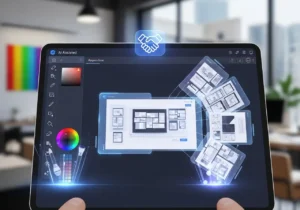Introduction: The New Era of Design
Graphic design in 2025 is not just about static visuals or printed layouts — it’s a dynamic, multi-dimensional experience. As consumers navigate immersive environments, from AR shopping to AI-generated art, brands are redefining their identities. Design now speaks, moves, and interacts. The transition from static to interactive branding is reshaping how audiences engage with visual storytelling.
At JTEQ, we’ve seen how the convergence of technology and creativity is changing the way design communicates. The question is: how can brands keep up in this fast-evolving landscape?
Why Static Design No Longer Captures Attention
For decades, graphic design revolved around visual balance, typography, and composition. These fundamentals remain vital, but user expectations have evolved. Audiences want interaction — they want to scroll, tap, and experience brand stories, not simply view them.
With shrinking attention spans and an explosion of digital touchpoints, static visuals are no longer enough to hold a viewer’s focus. Interactive branding introduces elements such as motion, animation, responsive graphics, and AR overlays that transform passive viewers into active participants.
Consumer Behavior Is Driving the Change
According to Adobe’s 2025 Creative Trends Report, 87% of consumers engage longer with content that includes motion or interactive features. Engagement metrics like dwell time, shares, and conversions rise dramatically when designs invite participation.

Key Graphic Design Trends Shaping 2025
1. Motion Graphics and Micro-Animation
Motion design has evolved from being an embellishment to a storytelling tool. Subtle hover effects, animated logos, and dynamic typography can now communicate emotion and rhythm instantly. In 2025, brands are leaning heavily into micro-animations to create smooth, responsive experiences that guide users intuitively through interfaces.
Whether in app design, web interfaces, or digital advertisements, motion adds life. A scrolling product page that subtly animates as you move creates a sense of depth and engagement — it’s what keeps users exploring longer.
2. Augmented Reality (AR) and Immersive Branding
Augmented reality is no longer futuristic; it’s mainstream. Brands use AR to let customers “try before they buy” — from testing makeup filters to previewing furniture in their living rooms. AR brings the brand experience directly into consumers’ environments, blurring the line between physical and digital design.
For graphic designers, this means creating assets that respond to movement and spatial awareness. Designing AR-ready visuals requires a new skill set: understanding 3D modeling, interactivity, and cross-platform rendering.
3. AI-Assisted Design Tools
Artificial intelligence is becoming an indispensable creative partner. Tools like Adobe Firefly and Canva’s Magic Studio allow designers to generate variations, suggest layouts, and even predict which color palettes perform best with target audiences.
But rather than replacing creativity, AI enhances it. Designers who embrace AI can focus on storytelling, strategy, and brand emotion — while automation handles repetitive design tasks. The result: faster turnaround, higher consistency, and more time for innovation.
4. Personalized, Data-Driven Visuals
Personalisation in design goes beyond changing a name in an email header. In 2025, it means delivering contextually relevant visuals that adapt to user behavior. For instance, an interactive banner might change color schemes or copy based on the viewer’s region or time of day.
This data-driven approach merges analytics with aesthetics. It’s where design meets marketing intelligence — and brands that understand this intersection are gaining measurable competitive advantages.
5. Sustainable and Ethical Design
Eco-consciousness has entered the design conversation. Designers are rethinking the carbon footprint of digital content — optimizing images, using dark-mode designs to save energy, and choosing green hosting solutions. Ethical design also extends to accessibility, ensuring visuals are inclusive for users of all abilities.
Sustainability is no longer a corporate checkbox; it’s an expectation. Interactive branding must align with these values, balancing innovation with responsibility.
The Rise of Interactive Branding

Interactive branding is the art of creating multi-touch experiences where users engage with brand visuals directly — through gestures, clicks, or voice. Instead of a logo being static on a page, it could animate based on user interaction. A packaging design might come alive when scanned with a smartphone. These moments of engagement deepen emotional connection and brand recall.
Examples of Interactive Branding
- Spotify Wrapped: Each year’s personalised, data-driven visual storytelling campaign turns user data into shareable art — a perfect blend of design and interactivity.
- Nike By You: Interactive customisation tools allow users to design their own sneakers, merging creativity with commerce.
- AR Product Launches: Brands like IKEA and Sephora use AR to bridge the gap between imagination and purchase.
These experiences illustrate the shift: audiences don’t just consume branding — they co-create it.

How Brands Can Transition to Interactive Design
Transitioning from static to interactive branding requires a shift in mindset and workflow. Here are actionable strategies:
1. Start with Motion-First Thinking
Plan your brand system as an evolving experience rather than a static identity. Think about how your logo animates, how colors transition, how typography reacts to scrolling. These elements create visual rhythm and a living identity.
2. Integrate Technology Early
Bring developers and UX designers into the branding process early. Interactive design requires collaboration between visual designers, coders, and strategists. This alignment ensures your brand identity is scalable across digital platforms.
3. Build an Interactive Brand Style Guide
Traditional brand guides define colors, fonts, and tone. An interactive guide includes animation timing, hover states, transitions, and motion rules. These parameters maintain consistency even in dynamic environments.
4. Use AI for Prototyping and Personalisation
AI tools can quickly create mockups of interactive components, simulate user behavior, and help identify engagement hotspots. They can also personalize visuals automatically for different audience segments — from color preferences to content recommendations.
5. Focus on Storytelling and Emotion
Technology attracts attention, but storytelling keeps it. Every interaction should reinforce your brand’s narrative. Whether it’s an animated sequence or an AR overlay, it should evoke emotion, not just novelty.
Challenges of Interactive Branding

As exciting as it is, this evolution comes with challenges:
- Technical complexity: Integrating motion, 3D, and AR requires new tools and skill sets.
- Accessibility: Interactive elements must remain usable for all users, including those with disabilities.
- Performance: Animation-heavy designs can slow loading times if not optimized properly.
- Consistency: Interactive experiences must align with overall brand identity across multiple touchpoints.
Overcoming these challenges requires continuous testing, user feedback, and collaboration between creative and technical teams.
How JTEQ Helps Businesses Stay Ahead
At JTEQ, our mission is to help brands thrive in the digital age through innovative, interactive, and ethical design practices. We integrate AI-assisted workflows, motion-first branding systems, and AR-driven visual strategies to build cohesive brand experiences across all platforms.
For example, one of our recent projects involved rebranding a technology startup using motion logo design and interactive landing pages. The result? A 43% increase in on-page engagement and a 27% lift in lead conversions within three months.
If your brand still relies on static visuals, now is the time to evolve. The design world won’t slow down — but JTEQ can help you stay ahead of it.
External Resources to Explore
To dive deeper into modern design innovations, check out Awwwards’ Interactive Design Showcase — a curated collection of world-class interactive projects pushing design boundaries in 2025.
Conclusion: The Future Is Interactive
As we look toward 2025 and beyond, the fusion of art, technology, and interactivity will continue to redefine graphic design. Static branding will fade into history, replaced by immersive visual ecosystems that invite users to participate, not just observe.
The brands that succeed will be those that evolve with intention — embracing motion, AR, AI, and personalisation to craft experiences that feel alive. The future of design is not only seen but felt, touched, and shared. It’s time for your brand to move, too.
